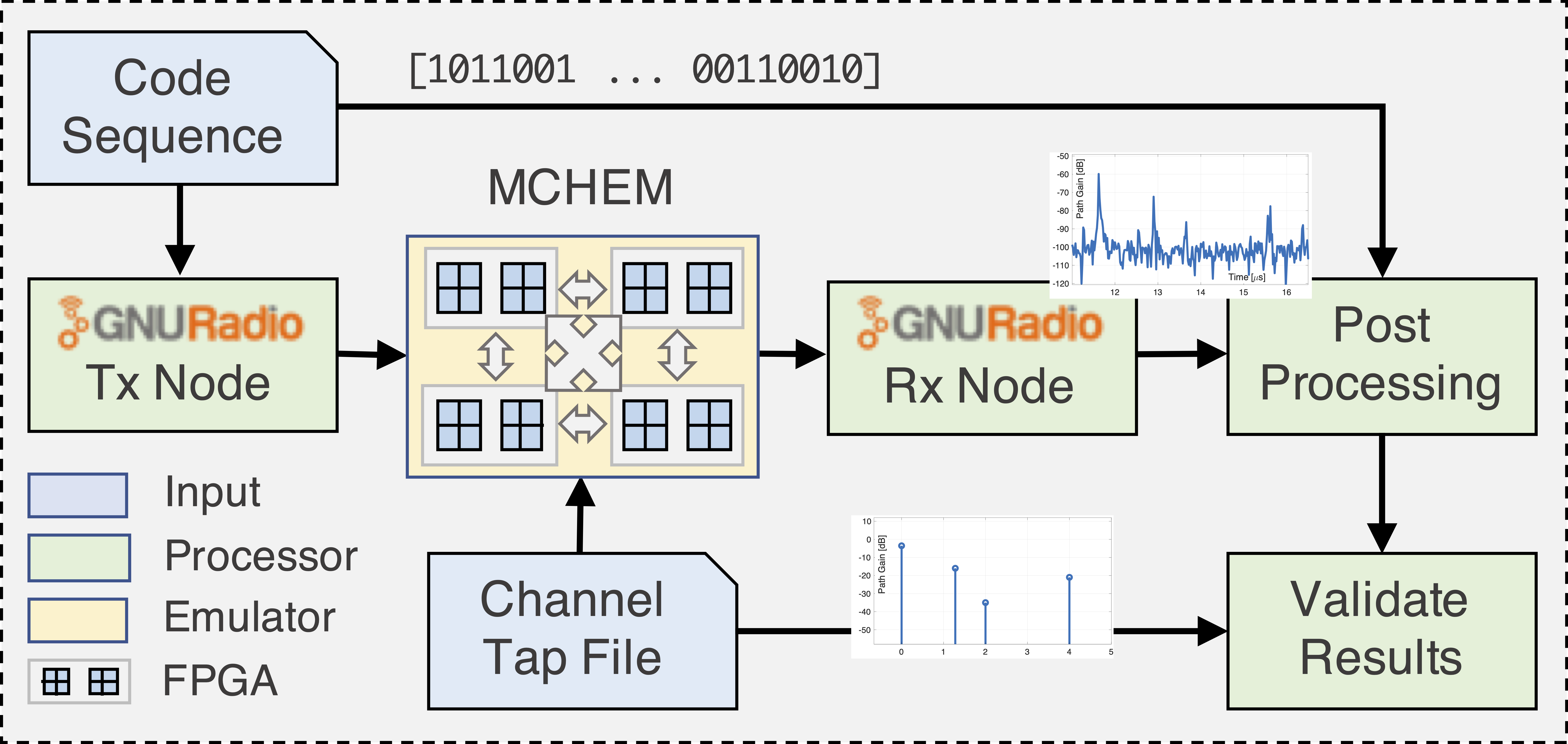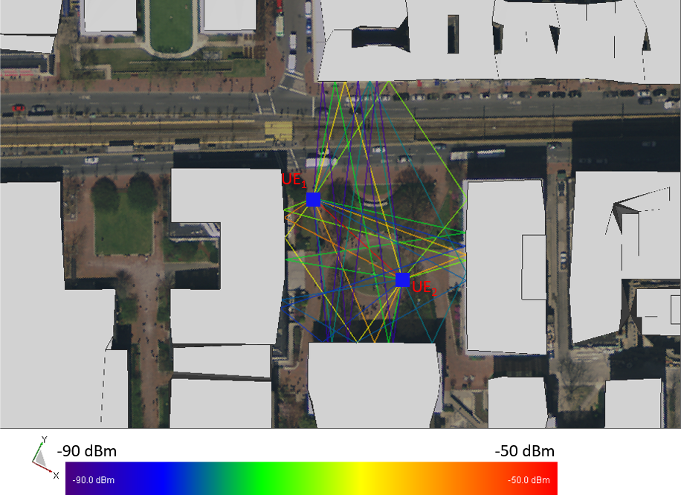Digital Twin for Advanced Wireless Research
Publications
-
D. Villa, M. Tehrani-Moayyed, C. Robinson, L. Bonati, P. Johari, M. Polese, T. Melodia, "Colosseum as a Digital Twin: Bridging Real-World Experimentation and Wireless Network Emulation," IEEE Transactions on Mobile Computing, in press, 2024. [pdf] [bibtex]
-
D. Villa, M. Tehrani-Moayyed, P. Johari, S. Basagni, T. Melodia, "CaST: A Toolchain for Creating and Characterizing Realistic Wireless Network Emulation Scenarios", Proc. of the 16th ACM Workshop on Wireless Network Testbeds, Experimental evaluation & CHaracterization (WiNTECH 2022), Sydney, Australia, October 2022. [pdf] [bibtex]
-
M. Tehrani-Moayyed, L. Bonati, P. Johari, T. Melodia, and S. Basagni, "Creating RF Scenarios for Large-Scale, Real-Time Wireless Channel Emulators," in Proc. of Mediterranean Communication and Computer Networking Conference (MedComNet), Virtual Conference, June 2021. [pdf] [bibtex]
-
L. Bonati, P. Johari, M. Polese, S. D'Oro, S. Mohanti, M. Tehrani-Moayyed, D. Villa, S. Shrivastava, C. Tassie, K. Yoder, A. Bagga, P. Patel, V. Petkov, M. Seltser, F. Restuccia, A. Gosain, K.R. Chowdhury, S. Basagni, T. Melodia, "Colosseum: Large-Scale Wireless Experimentation Through Hardware-in-the-Loop Network Emulation," Proc. of IEEE Intl. Symp. on Dynamic Spectrum Access Networks (DySPAN), Virtual Conference, December 2021. [pdf] [bibtex]
Colosseum Related Works
-
L. Bonati, M. Polese, S. D'Oro, S. Basagni, T. Melodia, "OpenRAN Gym: AI/ML Development, Data Collection, and Testing for O-RAN on PAWR Platforms," Computer Networks, vol. 220, pp. 1-11, January 2023. [pdf] [bibtex]
-
S. D'Oro, M. Polese, L. Bonati, H. Cheng, and T. Melodia, "dApps: Distributed Applications for Real-time Inference and Control in O-RAN," IEEE Communications Magazine, vol. 60, no. 11, November 2022. [pdf] [bibtex]
-
M. Polese, L. Bonati, S. D'Oro, S. Basagni, T. Melodia, "ColO-RAN: Developing Machine Learning-based xApps for Open RAN Closed-loop Control on Programmable Experimental Platforms", IEEE Transactions on Mobile Computing, pp. 1-14, July 2022. [pdf] [bibtex]
-
L. Bonati, S. D'Oro, M. Polese, S. Basagni, and T. Melodia, "Intelligence and Learning in O-RAN for Data-driven NextG Cellular Networks", IEEE Communications Magazine, vol. 59, no. 10, pp. 21–27, October 2021. [pdf] [bibtex]
-
C. Robinson, L. Bonati, T. van Nieuwstadt, T. Reiss, P. Johari, M. Polese, H. Nguyen, C. Wat- son, T. Melodia, "eSWORD: Implementation of Wireless Jamming Attacks in a Real-World Emulated Network", IEEE Communications and Networking Conference (WCNC), Glasgow, Scotland, March 2023. [pdf] [bibtex]
-
L. Bonati, M. Polese, S. D'Oro, S. Basagni, T. Melodia, "Intelligent Closed-loop RAN Control with xApps in OpenRAN Gym," Proc. of European Wireless 2022, Dresden, Germany, September 2022. [pdf] [bibtex]
-
S. D'Oro, L. Bonati, M. Polese, T. Melodia, "OrchestRAN: Network Automation through Orchestrated Intelligence in the Open RAN," Proc. of IEEE Intl. Conf. on Computer Communications (INFOCOM), May 2022. [pdf] [bibtex]
-
L. Bonati, M. Polese, S. D'Oro, S. Basagni, T. Melodia, "OpenRAN Gym: An Open Toolbox for Data Collection and Experimentation with AI in O-RAN," Proc. of IEEE WCNC Workshop on Open RAN Architecture for 5G Evolution and 6G, Austin, TX, USA, April 2022. [pdf] [bibtex]
-
T. Melodia, S. Basagni, K.R. Chowdhury, A. Gosain, M. Polese, P. Johari, and L. Bonati, "Tutorial: Colosseum, the World’s Largest Wireless Network Emulator," in Proc. of ACM Intl. Conf. on Mobile Computing and Networking (MobiCom), New Orleans, LA, USA, October 2021. [pdf] [bibtex]
-
B. Casasole, L. Bonati, S. D'Oro, S. Basagni, A. Capone, and T. Melodia, "QCell: Self-optimization of Softwarized 5G Networks through Deep Q-learning," in Proc. of IEEE Global Communications Conference (GLOBECOM), Madrid, Spain, December 2021. [pdf] [bibtex]
-
L. Bonati, S. D'Oro, S. Basagni, and T. Melodia, "SCOPE: An Open and Softwarized Prototyping Platform for NextG Systems," in Proc. of ACM Intl. Conf. on Mobile Systems, Applications, and Services (MobiSys), Virtual Conference, June 2021. [pdf] [bibtex]
Outreach
People
Collaborators
- Miead Tehrani-Moayyed
- Stefano Basagni






